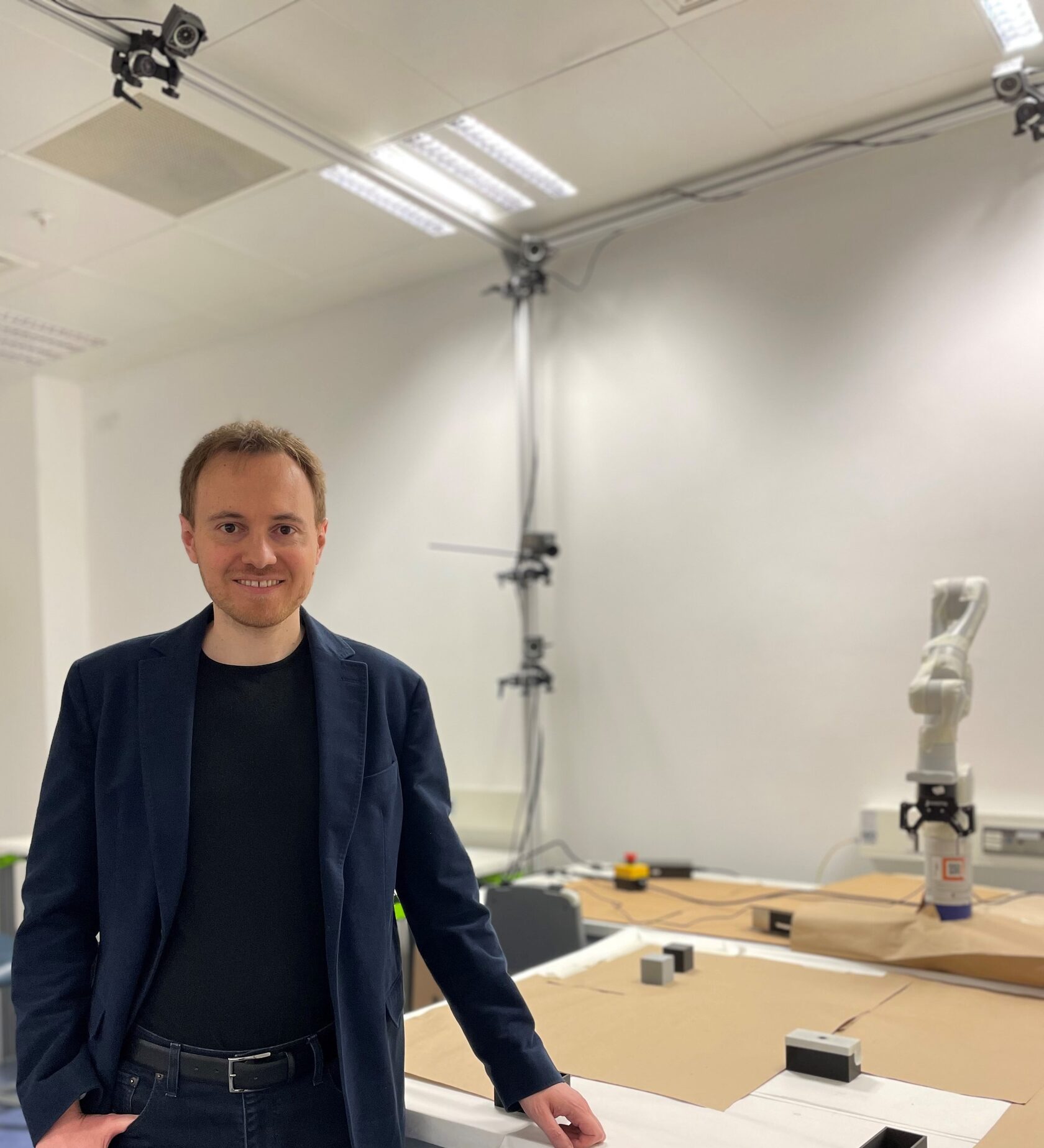A study conducted at Nazarbayev University in the School of Engineering and Digital Sciences (NU SEDS) under the leadership of Professor Matteo Rubagotti, Acting Chair of the Robotics Department, has won the prestigious "Best Paper of 2024" award from Control Engineering Practice, a leading scientific journal in the field of control systems research. This research has developed a unique methodology for human-robot interaction, expected to transform the approach to safely sharing workspaces between humans and robots. The methodology allows robots to adapt their movements in real-time to avoid collisions with humans while working alongside them.
The foundation of the methodology is “Nonlinear Model Predictive Control,” which enables the robot to predict probable trajectories of human movement. With a "speed and separation monitoring" system, the robot can stop or slow down if a human unexpectedly comes into its path, providing additional safety during collaborative work.
The methodology has been successfully tested on the Kinova Gen3 robot, confirming its safety and superiority over traditional control methods: the robot quickly and flexibly responds to the presence of a human.
Professor Rubagotti emphasized that this approach would enable robots not only to avoid accidents but also to adjust their actions to changes in human behavior while adhering to ISO safety standards prevalent in industry. Such proactive adaptation will allow robots to work alongside humans more productively without compromising safety.
The idea of using stochastic model predictive control methods for human-robot workspace sharing was developed by Professor Rubagotti together with the international collaborator, Professor Alberto Bemporad, who in the past elaborated the theory of this specific control method. Artemiy Oleinikov (MSc in Robotics) implemented and tested all the considered motion planning algorithms, whereas Sergey Soltan (MSc in Computer Science) and Zarema Balgabekova (at the time, BSc student in Robotics and Mechatronics) worked on the human prediction method based on higher-order Markov chains. They worked under the supervision of Professor Rubagotti, who also proved theoretical results on the stability of the proposed motion planning system.
The research at NU SEDS holds the potential for safe human-robot interaction across various domains—from manufacturing to medicine—where robots can work safely and effectively alongside humans.
For additional information, please refer to the official announcement via the link.
The foundation of the methodology is “Nonlinear Model Predictive Control,” which enables the robot to predict probable trajectories of human movement. With a "speed and separation monitoring" system, the robot can stop or slow down if a human unexpectedly comes into its path, providing additional safety during collaborative work.
The methodology has been successfully tested on the Kinova Gen3 robot, confirming its safety and superiority over traditional control methods: the robot quickly and flexibly responds to the presence of a human.
Professor Rubagotti emphasized that this approach would enable robots not only to avoid accidents but also to adjust their actions to changes in human behavior while adhering to ISO safety standards prevalent in industry. Such proactive adaptation will allow robots to work alongside humans more productively without compromising safety.
The idea of using stochastic model predictive control methods for human-robot workspace sharing was developed by Professor Rubagotti together with the international collaborator, Professor Alberto Bemporad, who in the past elaborated the theory of this specific control method. Artemiy Oleinikov (MSc in Robotics) implemented and tested all the considered motion planning algorithms, whereas Sergey Soltan (MSc in Computer Science) and Zarema Balgabekova (at the time, BSc student in Robotics and Mechatronics) worked on the human prediction method based on higher-order Markov chains. They worked under the supervision of Professor Rubagotti, who also proved theoretical results on the stability of the proposed motion planning system.
The research at NU SEDS holds the potential for safe human-robot interaction across various domains—from manufacturing to medicine—where robots can work safely and effectively alongside humans.
For additional information, please refer to the official announcement via the link.
